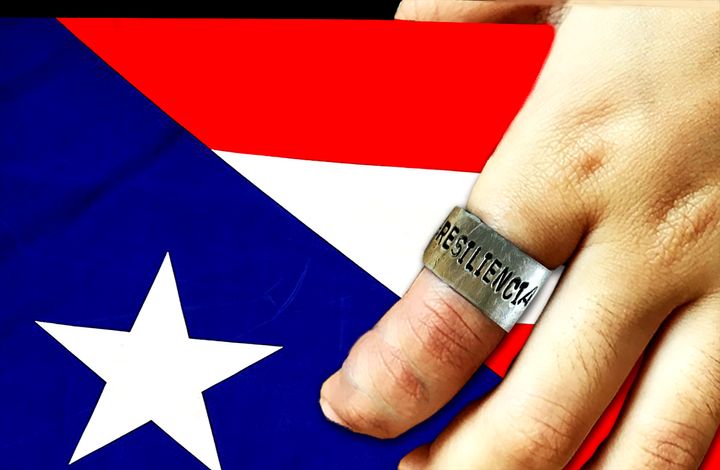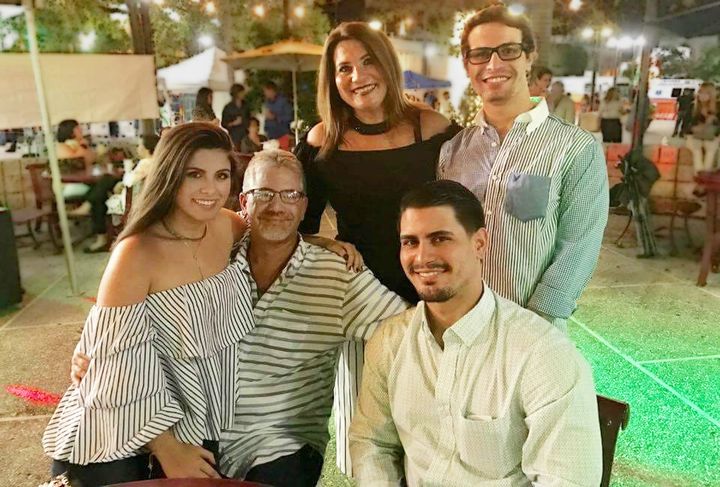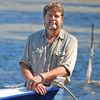“We are Generation R. We are ready. We are resilient. And we will rebuild.” ― Sarah Gabriella Pereira

“Resiliencia” is hand-engraved into the silver ring that every day adorns Sarah Gabriella Pereira’s hand.
In the days leading up to and after Hurricane Maria, Sarah Gabriella Pereira lived by her cell phone. She had learned the hard way that a even a moment’s hesitation might disconnect her from home, thanks to Puerto Rico’s now frail cellular system. She abruptly left her Pace University classes without warning to talk to her mother. “Sometimes, I’d see I had a missed call, and I would start crying. On my birthday, the day before Maria landed, I received none of my usual family calls.” They were anxiety-filled days.
“Resiliencia” is hand-engraved into the silver ring that every day adorns the left hand of the international management major at the university’s Lubin School of Business. She was unfamiliar with the word when she found the ring a year and a half ago in a display of homemade jewelry back home in the city of Caguas. “It captured my attention,” she said. “When I learned what it meant, I understood. I identify with it.”

Before Maria: The Pereira family. L to R: Sarah Gabriella Pereira, father Dr. Rafael Pereira, mother Sarah, brothers Rafael and Reinaldo.
Caguas, in the central eastern part of Puerto Rico, endured more than three feet of rain during the historic storm that began hammering the island on Sept. 20 with 155-mph wind gusts. Shortages and ruined services made living conditions dire. Power outages are the norm. Like the rest of the island, the local supply chain was crippled by fuel shortages, damaged highways and logistical confusion.
Keeping up with the purchase of everyday necessities is a challenge. In the aftermath, Sarah’s mother, named Sarah as well, could only withdraw $100 at a time from the local bank teller or the ATM, if it were operational. Bank lines were long and she had to make money last. Food is still dear and neighbors take turns preparing meals for each other. “It is economical. They never know when the money is going to run out. My mom said she has been eating cereal. They can’t even eat ham and cheese sandwiches because there is no place to store ham or cheese ― ice is necessary. They have to stand in line for ice.”
It is a time to reflect on why we should appreciate our lives. Sometimes, we don’t appreciate the little things. And it’s the little things that are needed now. ― Sarah Garbriella Pereira
Sarah says resiliencia is integral to Puerto Rican culture and her upbringing, the reason the island and its people will survive and thrive. “We are literally a hopeful and happy people. Obviously, many back home are desperate now and they have reason to be. But we will do the impossible and have a Puerto Rico that is even better.”
Resilience is also a favored word among climate and security experts, but cold and technical in its application. It is discussed at a distance from disasters ― in conferences, meeting rooms, and agency strategy sessions. Resilience is about models that theoretically assure systems are securely in place, responders are prepared to mobilize, and resources are at the ready. That is, until a weather bomb like Hurricane Maria explodes in people’s lives, leaving only human resilience to stand and fight.

The Department of Homeland Security says resilience requires “the shared responsibility of all levels of government, the private and nonprofit sectors, and individual citizens.” But what happens when government and the private and nonprofit sectors fail in their shared responsibility, are rendered as helpless as the family short on food because it hasn’t access to its own money?
“No matter how much we plan, without human resilience we don’t survive,” said Professor Joseph Ryan, chair of Pace University’s masters program in Management for Public Safety and Homeland Security Professionals. “When Tom Ridge [Secretary of Homeland Security under President George W. Bush] spoke at Pace University’s first resiliency conference about the 2010 National Security Strategy, he said we will achieve resilience through public private partnerships. The private sector has 90% of the resources and no authority. Government has few resources and all the authority. They have no idea what a public private partnership is. And if we are really going to achieve resilience, we need to work together.”
In keeping with tradition, President Donald Trump, Chief of State of the unincorporated American territory of Puerto Rico, treats the island like a distant nation.
Puerto Rico is challenged on both counts. It is poor in resources, with more than $70 billion of debt, and 43.5% living below the poverty line -- before Maria. As for government, President Donald Trump is Chief of State of the unincorporated American territory of Puerto Rico and, in keeping with tradition, treats the island like a distant nation, not an American territory.
In short, there is no partnership on the horizon ready to make Puerto Rico resilient. According to Dr. Ryan, neither is the U.S. mainland ready. “Nothing meaningful has happened since 9/11. We learned nothing from Katrina. How many communities have more than a week’s supply of medicine? How many people have access to a month’s emergency water supply?” He cautions not to place the Puerto Rico experience in a box, as if it could not be repeated stateside. Sandy and Katrina approached but did not achieve the dimensions of Maria.
Slowly, distribution of food and supplies is beginning to improve in Puerto Rico, but the daily struggle for life’s staples continues – water, food, power, cash, ice, prescription drugs. Normalcy is slowly returning to Sarah Gabriella Pereira’s family as well. Her father Rafael, a doctor, is back to work at the veteran’s hospital, and her brothers Rafael and Reinaldo have also returned to work.
“They are learning to live one day at a time,” she said. “They are trying to be hopeful. It is a time to reflect on why we should appreciate our lives. Sometimes, we don’t appreciate the little things. And it’s the little things that are needed now.”
Sarah’s dream for Puerto Rico is independence, an island nation built on the resilience of its people, especially her generation. “Our goal is to defend our rights as Puerto Ricans, our own right to dream. We are Generation R. We are ready. We are resilient. And we will rebuild.”
This article also appears on EarthDesk, the blog of the Dyson College Institute for Sustainability and the Environment at Pace University.
